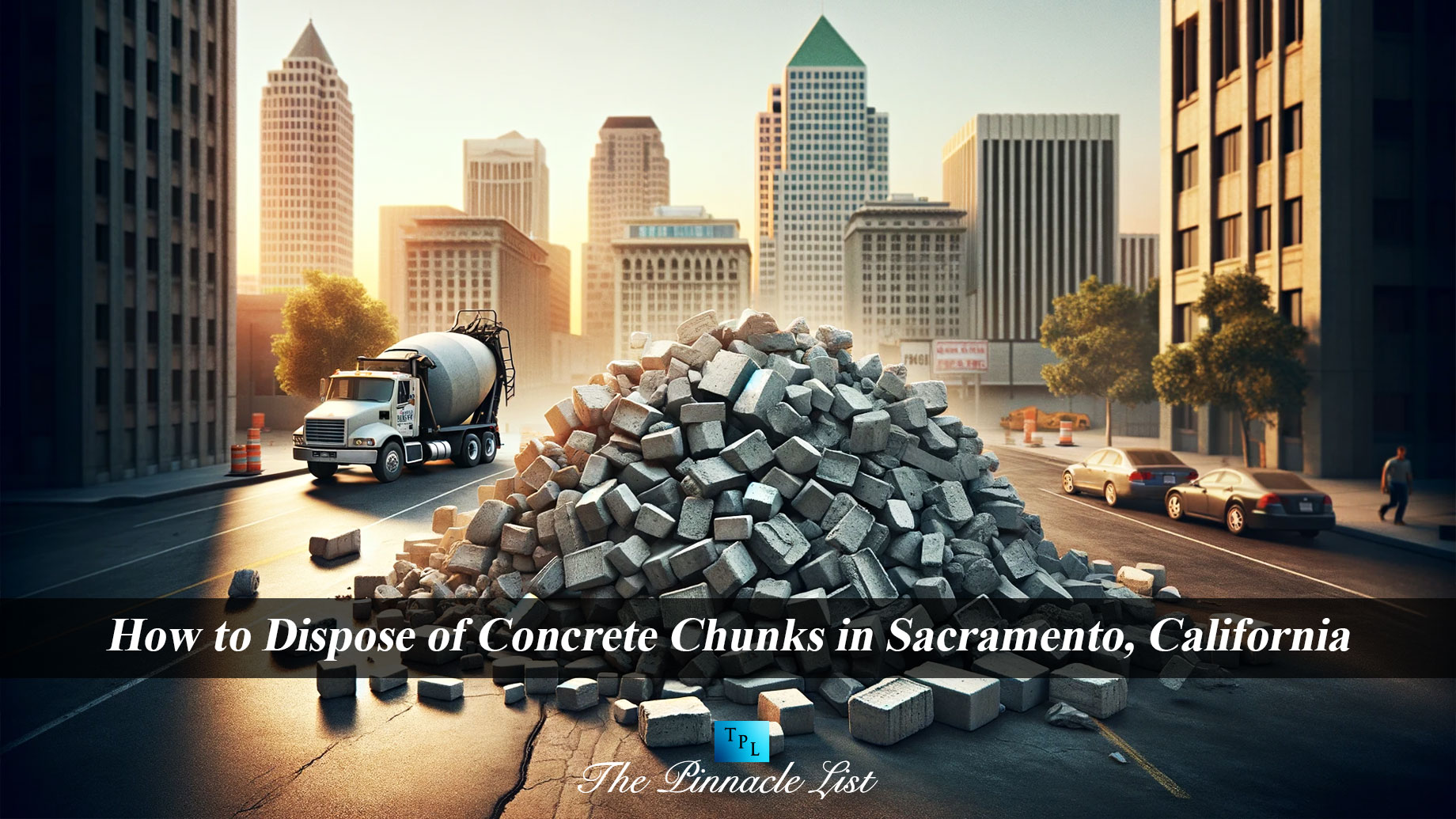
Concrete, at its core, is a robust material composed primarily of water, cement, and aggregates. This unique blend is what gives concrete its remarkable strength, making it a staple for construction contractors.
However, these same attributes pose a significant challenge when it comes to disposal. Unlike organic waste, concrete doesn’t decompose over time. This fact alone elevates the importance of understanding concrete’s nature before we delve into the appropriate disposal methods.
Concrete Doesn’t Belong in Regular Trash
Intuitively, it might seem like smaller pieces of concrete could be tossed in with regular trash. However, this approach is far from ideal. Concrete’s weight can damage waste management equipment.
Furthermore, disposing of concrete in landfills takes up valuable space that could be used for other types of waste that cannot be recycled. Recognizing the unsuitability of concrete for regular trash disposal is the first step toward addressing the bigger environmental picture.
Consequences of Concrete Mismanagement
When concrete is not disposed of properly, its environmental impact can be significant. This impact includes the potential contamination of soil due to its chemical components. Additionally, improper disposal contributes to the unnecessary filling of landfills, which are already under immense strain.
Mismanaged concrete waste also overlooks the opportunity for recycling this durable material, leading to a needless increase in quarrying for fresh materials. As we explore the avenues for concrete disposal in Sacramento, it’s crucial to keep these environmental considerations in mind, ensuring our practices are sustainable.
Major Contributors to Concrete Waste
Home Renovation Projects
Home renovation projects are a surprisingly significant source of concrete waste. When homeowners undertake major remodeling, old concrete often needs to be removed. It’s not just large-scale renovations that contribute; even small projects can generate a notable amount of concrete debris. Recognizing the role of residential renovations in concrete waste production is key to managing this issue effectively.
Construction Sites
Construction sites are, without a doubt, one of the largest contributors to concrete waste. These sites often have excess concrete from new constructions, demolition debris from old structures, and cut-offs from various building activities.
The sheer volume of concrete generated at these sites presents a significant challenge in terms of sustainable disposal. Understanding the magnitude of waste from construction sites is crucial for developing environmentally friendly ways to handle concrete debris.
Breaking Down the Costs of Concrete Disposal
Professional Concrete Removal Services
When considering professional concrete removal services, the first thing to note is their efficiency. These companies, equipped with the right tools, specialize in safely breaking down and removing concrete.
The cost of hiring a professional service often reflects the complexity of the job, including factors like the amount of concrete, accessibility of the site, and disposal requirements. While this option may seem pricier upfront, it ensures proper disposal, aligning with environmental regulations.
Renting a Dumpster for Concrete Disposal
For those considering a do-it-yourself approach, renting a dumpster is a popular option. This method allows for more control over the disposal process. The key costs to consider here include the rental fee, which varies based on the dumpster size, and potential overage charges if the weight limit is exceeded. While this method requires more hands-on involvement, it can be a smart choice for experienced DIY enthusiasts.
Responsible Ways to Dispose of Concrete
Recycling Concrete
Recycling concrete is not just an environmentally friendly option; it’s also a practical approach to waste management. The process starts with breaking down concrete into smaller, manageable pieces.
These pieces are then crushed and screened to remove any contaminants. The resulting material can be reused in new construction projects, reducing the need for virgin materials. By recycling concrete, we not only conserve natural resources but also reduce greenhouse gas emissions associated with the production of new concrete.
Concrete Donations
Donating unused concrete can be a noble way to dispose of it. Many nonprofits seek materials for construction purposes. This method not only diverts concrete from landfills but also contributes to meaningful causes. Before donating, it’s important to ensure the concrete is free from contaminants. Finding a local organization that accepts concrete donations can be a simple yet impactful way to handle excess materials.
Utilizing Local Landfills
When recycling or donating isn’t feasible, using local landfills is another option. However, it’s crucial to choose landfills that follow proper guidelines. Some landfills have specific areas for concrete, ensuring it doesn’t mix with other waste. This method might involve a fee, based on the landfill’s policies. While not the most sustainable option, it’s a regulated way to dispose of concrete when other methods are not available.